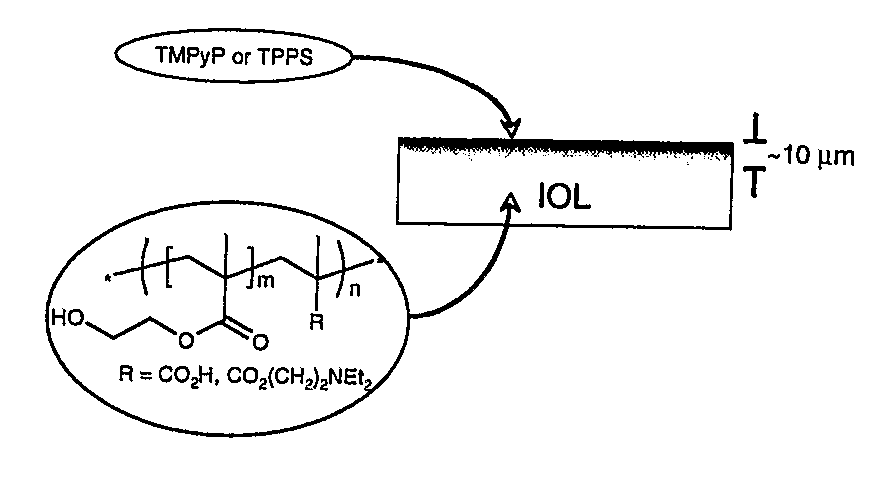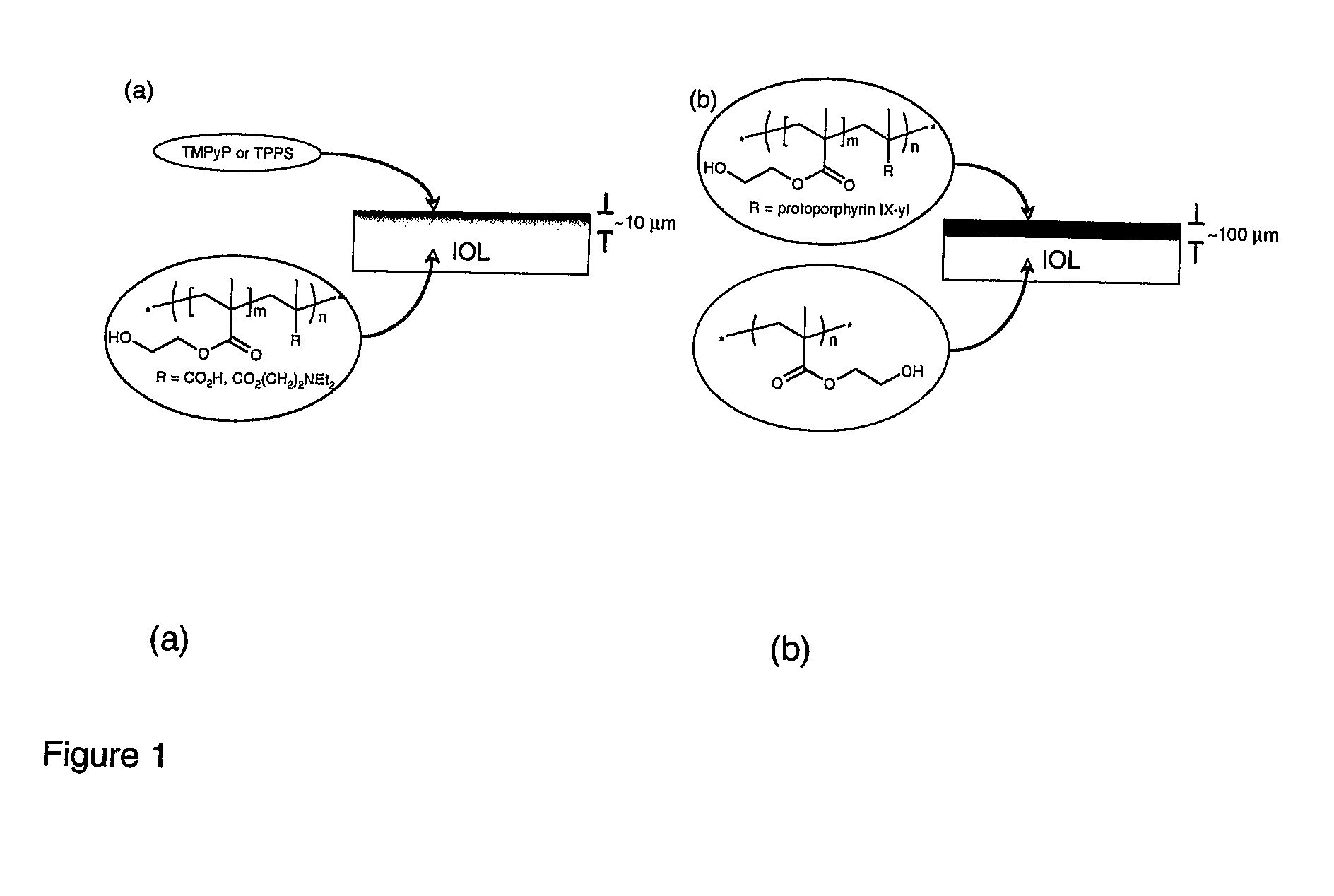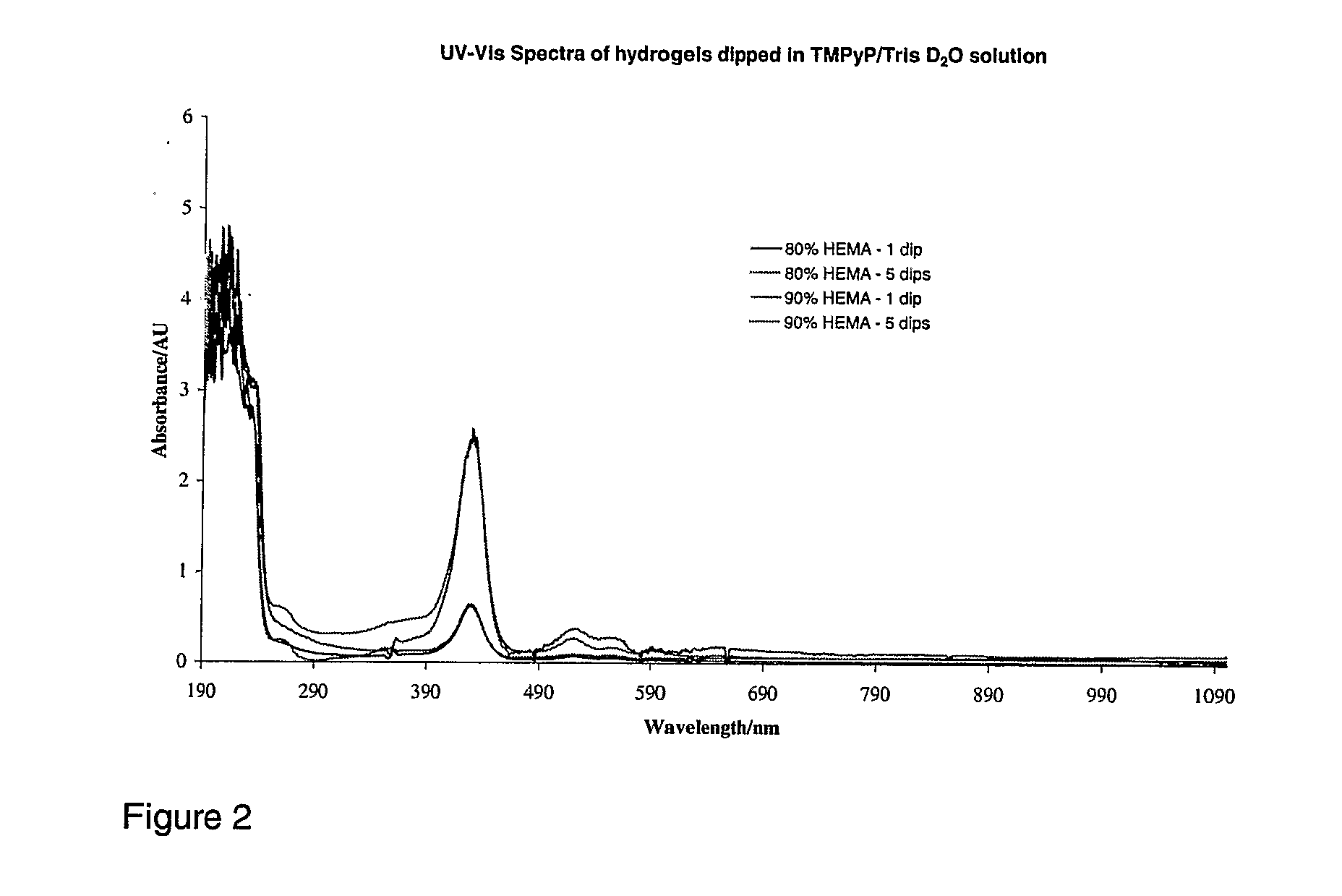Material and uses thereof
a technology of materials and uses, applied in the field of materials and uses thereof, can solve the problems of significant cost for healthcare systems, said bacteria present a risk of infection, etc., and achieve the effect of increasing activity and continuous anti-microbial and/or antiviral activity
- Summary
- Abstract
- Description
- Claims
- Application Information
AI Technical Summary
Benefits of technology
Problems solved by technology
Method used
Image
Examples
example 2
Incorporation of Sensitizer(s) Using Covalent Interaction
[0146]Referring to FIG. 1b biomaterials may be formed using hydrogels which are coated with copolymers of a standard monomer, 2-hydroxyethylmethacrylate (HEMA, a biocompatible hydrogel that has found widespread use as an ocular biomaterial), with a vinyl-functionalised porphyrin.
[0147]The preparation involves dip- or spin-coating a mixture of HEMA, porphyrin and initiator onto the biomaterial surface. Heating initiates free-radical polymerisation to give a material with porphyrin covalently bound at the surface layer.
example 3
Porphyrin Impregnated Material Studies
[0148]Microbiological activity of porphyrin-impregnated materials has been studied.
[0149]Based on the triplet results, 90% HEMA prewetted and dipped for 60 s in a 100 mcg / mL TMPyP solution was tested.
[0150]Portions of material, cut into 1 cm2 pieces, were placed on sterile hypodermic needles which were then placed inside sterile McCartney bottles. The materials to be dipped in porphyrin solution were then dipped in the 100 mcg / mL solution in a McCartney bottle and then rinsed with phosphate buffered saline (pH 7.4) to remove any excess porphyrin from the surface.
[0151]Enough S. epidermidis culture (2.62×108 cfu / mL bioburden) was added to completely cover the materials in the McCartney bottles which were then placed in an orbital incubator shaker. The materials were removed after 4 hours.
[0152]The number of organisms adhering was subsequently determined using the following method.
[0153]Using sterile forceps the needles were removed and placed in ...
example 4
[0163]Using the same material, same porphyrin and same incorporation conditions, but challenged with a lower inoculum of 5.05×103 cfu / mL S. epidermidis, samples containing porphyrin kept in the dark showed a reduction in adhered organisms of 97.0% relative to a control sample exposed to daylight, and samples containing porphyrin and exposed to strong light showed a reduction compared to the control of 100% (i.e. complete kill was achieved).
PUM
| Property | Measurement | Unit |
|---|---|---|
| Thickness | aaaaa | aaaaa |
| Thickness | aaaaa | aaaaa |
| Nanoscale particle size | aaaaa | aaaaa |
Abstract
Description
Claims
Application Information
 Login to View More
Login to View More - R&D
- Intellectual Property
- Life Sciences
- Materials
- Tech Scout
- Unparalleled Data Quality
- Higher Quality Content
- 60% Fewer Hallucinations
Browse by: Latest US Patents, China's latest patents, Technical Efficacy Thesaurus, Application Domain, Technology Topic, Popular Technical Reports.
© 2025 PatSnap. All rights reserved.Legal|Privacy policy|Modern Slavery Act Transparency Statement|Sitemap|About US| Contact US: help@patsnap.com



